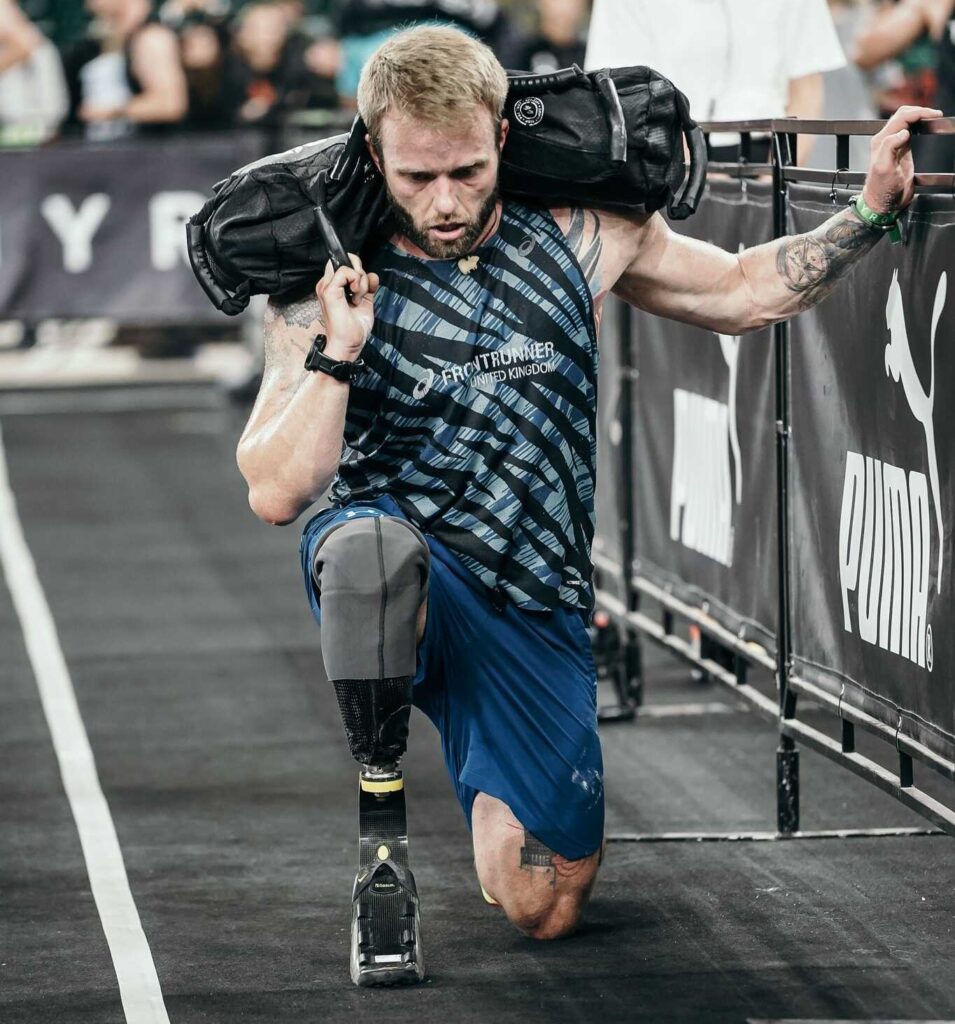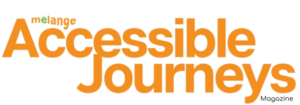
Listen to this Article
Jamie Gane is a British adaptive athlete, motivational speaker, and coach. He has competed internationally in para-athletics and obstacle course racing, making him one of the UK’s leading figures in adaptive sport.
You pioneered the international classification system for adaptive OCR athletes. Why was this important, and what challenges did you face?
When I first started obstacle racing, I had to compete against able-bodied athletes. To qualify for European and World Championship levels, I needed to finish inside the top three or the top five overall. That was not realistic for me at the time because I had to complete every obstacle in exactly the same way as non disabled athletes. At balance obstacles, there were no adaptations – not to mention a huge disadvantage on the running sections. It was clear the system was not fair. If we wanted more adaptive athletes on start lines, we needed a proper classification system and real opportunities that respected different bodies.
I spent 14 years in a wheelchair before walking, and I live with a spinal injury, so I often use a wheelchair. My perspective has shifted from a wheelchair user to an ambulant to an ambulatory wheelchair user, and that lived experience helped me see gaps others could not.
I designed and delivered the framework myself. I am the only classifier woldwide and I handle classification across British Obstacle Sports, European OCR, and World Obstacle events. I do this voluntarily, alongside working as a Secondary School teacher. The hardest parts were earning trust, keeping competitive integrity, and building something that works on a muddy field rather than just on paper. I piloted the system at events, refined the documentation, created clear athlete pathways and protections, and spent hours with organizers and officials to make sure the process worked in real time. Doing it solo has been demanding, but seeing full adaptive classes on the start line makes every hour worth it. We now have adaptive athlete waves at all British, European and World Championship levels.
Judo and OCR are both intense. How have they influenced each other in your development?
I love judo. After COVID it did not feel the same, and I also faced discrimination as an LGBT athlete from my coach. The club community wasn’t kind, and the homophobic comments from the coach were hurtful. At the same time, I fell in love with obstacle racing and the people in it.
In adaptive judo I was competing against people with dyslexia, and the discipline was at one point called special needs judo. I worked to change that language, but there still was no competition class that fitted me. I was not allowed to wear my leg, and I was matched with people who had very mild learning difficulties. It did not make sense for me, so I looked to OCR where I felt I could belong.
Judo gave me balance, grip, and body control. OCR gave me endurance, resilience, and a community that welcomed all of me. After 14 years in a wheelchair, running felt like freedom. Both sports taught me to move with purpose and to find calm in chaos.
As an openly LGBTQ+ athlete and speaker, how do you use your visibility to advocate for disability and LGBTQ+ inclusion?
I try to be very visible and very ordinary at the same time. I show up, compete hard, and speak honestly so people see possibility rather than exception. I push for practical steps with organizers and governing bodies, like inclusive entry policies, safeguarding that protects queer athletes, facilities that work for wheelchair users and ambulant athletes, and role models who reflect the communities we serve.
I carry my story as someone who uses a wheelchair and who can also walk. That mix helps me bridge conversations, because I understand different access needs from the inside. Visibility only matters if it opens the door for the next person.
A moment when someone’s response to your message profoundly affected you
Before I became a teacher, a young man stopped me in town. He was a new amputee who had found my blogs and social media. He said, “You are Jamie Gane, adaptive athlete, can I take a picture with you?”. We took the photo, and I went on with my day.
Two years later, I saw him again. He was taller and more confident. I recognized his face and realised he was the same young person. I felt a lump in my throat. I had always hoped sharing my journey might help someone a little. In that moment, I understood how deeply a story can plant hope. It changed how I think about impact and responsibility.
Top three travel tips for amputees and adaptive athletes heading to long distance events
1) Build buffer days. Aim to arrive at least 48 hours before your key event. Your limb can settle, you can adjust to time zones, and you can walk or wheel the access routes without pressure.
2) Create a simple race day checklist. Print it, keep it in your kit bag, and make decisions automatically when you are tired or jet-lagged. Include stump care items, liner care, spare socks, tape, pain relief, and a small tool kit.
3) Choose accommodation with laundry. The ability to wash liners, sleeves, and kit overnight can turn a painful race into a comfortable one, especially if you are managing skin integrity or swelling.
A time when accessibility made or broke a trip, and the lesson learned
A hotel listed an accessible bathroom. When I arrived, a fixed glass screen blocked a safe transfer to the shower. It turned each morning into a problem I had to solve while already tired from training. The lesson was simple. Ask for photos and basic measurements before you book. A five-minute email can save days of frustration. As someone who can walk and who also uses a wheelchair, I have learned to check both needs, not just one.
Accessibility tools, apps, or planning methods you rely on
I rely most on direct contact. I email hotels for lift dimensions, bathroom layouts, and step free routes, and I ask organizers for a named access contact. That said, here are tools others may find useful. AccessAble for venue audits. Wheelmap for step free places. Google Maps with Street View and satellite to spot curbs and gradients. National Rail Passenger Assist in the UK. Changing Places toilet finders. Airline assistance pages and SSR codes. The Hidden Disabilities Sunflower scheme for non visible needs. Eurostar assistance is excellent for wheelchair users.
Adapting training and recovery when travelling and gyms are not fully accessible
Running is freedom for me. I can run almost anywhere, and I am very aware of the privilege that gives me. I try to base myself near safe routes and I keep sessions short and focused if facilities are limited. I only truly need reliable disabled toilet facilities and a simple space to stretch.
Recovery is about rhythm. Sleep, hydration, basic mobility, and sensible session choices protect my spine and my stump. If a gym does not work for me, I train in my room or in a park, and I keep my goals simple so I can still perform on race day.
A city or country that surprised you in terms of inclusion
In Nepal I walked through a quiet street and people came out of their homes to greet me and to take photos. Many had never seen an amputee in person. I felt a mix of discomfort and gratitude. It reminded me that we carry visibility across borders, and that simple kindness, a smile and a moment of conversation, can change how someone sees disability.
Most memorable place for accessibility and support
Rather than naming one venue, I am proud of the way we are building accessibility into races from the ground up. Obstacle racing often takes place in remote areas with uneven terrain and limited parking. Even securing disabled parking or reserved spaces for those with access needs has been a long fight. We now plan those spaces and map the whole journey from car park to call up. That practical work lets adaptive athletes arrive calmer and safer.
Top accessibility priorities when travelling to compete, and surprises or innovations
Toilets and changing spaces come first. Dignity, privacy, and enough room to manage stump care or to transfer safely matter more than anything. After that I look for step free routes, simple transport between accommodation and venue, and medical teams who understand prosthetics. Surprises include beautiful historic surfaces that are slippery when wet, and temporary ramps that look helpful but are too steep. Positive innovations include tactile paving that guides you without fuss, low floor buses that kneel, and the growth of Changing Places facilities.
Go to travel gear for adaptive athletes
My Phoenix Rising bag that attaches to my wheelchair is my favourite piece of travel kit. It keeps my hands free through airports and makes moving with luggage simple. I keep a small limb care kit with spare liners and socks, quick dry towels, and a short letter that explains my prosthesis and tools for security staff. Trekking poles help on long days over rough ground.
For wheelchair users, Eurostar is fantastic. Fares are often significantly cheaper, companion fares are discounted, you are usually seated in a better class with a meal, and the assistance is consistent and respectful. If I can take Eurostar, I do.
Balancing performance, rest, and exploration in unfamiliar places
I split trips into phases. Before the event I protect energy and use short walks to recon access routes instead of sightseeing. After the event I choose one must do activity and one optional extra each day, then I stick to a firm sleep time. If access is poor, I give myself permission to let plans go. After 14 years in a wheelchair, I feel grateful for the chance to move, and I try to enjoy the place I am in without burning the candle at both ends.
Message to someone with a disability who wants to travel but feels held back
You do not have to fix everything before you begin. I spent 14 years in a wheelchair before walking, and I still use a wheelchair because of my spinal injury. Start with one trip that fits your body and your confidence today. Ask questions, plan your access, and give yourself margins for the unexpected. There will be barriers, and there will also be brilliant people who help. The first journey is the hardest. After that you are not proving anything. You are living your life on your terms.
